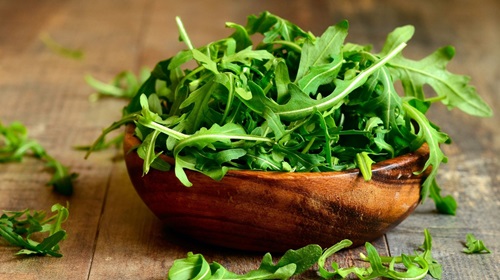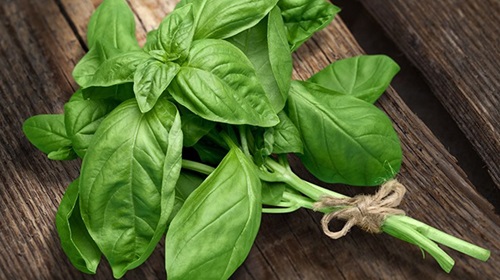Jan 1st 2025
What Grows Best in a Hydroponic Tower Garden
You're at the right place if you're looking for the best plants for hydroponics! The primary focus in this post will be on plants that are easiest to grow in hydroponic tower systems. You may use this to improve your gardening skills if you just bought a new hydroponic tower system.
Why Choose a Hydroponic Tower Garden?

Indoor gardening and small-space farming are being transformed by hydroponic towers, which provide a productive and environmentally friendly way to raise fresh vegetables all year round. These vertical gardening systems are perfect for both inexperienced and experienced gardeners since they not only make the most of limited space but also use less water and don't require soil. A hydroponic tower garden is a great option if you want to cultivate plants at home or in a small space.
Knowing which crops thrive in a hydroponic tower can help you get the most out of your setup, regardless of your level of experience. Fresh food, herbs, and even flowers may be enjoyed throughout the year with the right maintenance, including keeping pH levels within range and having enough water in your reservoir tank.
In order to help you create a successful vertical garden, we'll examine the finest plants for hydroponics towers in this article, taking into account things like growth patterns, nutritional demands, and light requirements.
Plants Suitable for a Hydroponic Tower
Leafy Greens
One of the simplest crops to cultivate in a hydroponic tower is leafy greens. Due of their rapid growth and low maintenance requirements, these plants function well in vertical systems. Beginner-friendly, leafy greens also adjust to reasonable variations in water level and pH.
- Lettuce: They are quite easy to maintain and grow quickly in a hydroponic system. Any hydroponic setup – including dutch buckets, ebb and flow, and NFT can be used to grow lettuce. For hydroponics, this veggie is unquestionably a fantastic plant.
- Arugula: Arugula loves moderate light levels and grows well in a hydroponic system with a pH of 6.0 to 6.5. This plant may be kept in the fridge for up to 10 days if stored correctly.
- Spinach: Since spinach is a cool plant, it doesn't need a lot of light. You can pluck off a few leaves or harvest it all at once. If the temperature and growth conditions are favorable, you can harvest continuously for up to 12 weeks.
- Kale: Kale grows well in a hydroponic system with moderate to high light levels and a pH of 5.5 to 6.5. Kale may be refrigerated for up to 7–10 days if stored properly. It's a green that works well in a variety of recipes, including kale chips, prepared meals, and smoothies.
Herbs
Growing your own herbs can save a lot of money annually. You probably use a small portion of a $3 to $5 package of basil, which has been kept in the refrigerator. It has likely been grown far away and traveled hundreds of miles to get to you. And who knows what’s been sprayed on it. This barely qualifies as flavorful and fresh. But the good news is that herbs thrive in a hydroponic setting.
Hydroponic garden towers are ideal for growing herbs since they thrive indoors. Herbs like cilantro, mint, and basil grow fast and take up less room. You may collect fresh herbs all year round with this strategy. These aromatic herbs can really enhance the flavor of your food.
With a hydroponic system, you can cultivate a wide variety of herbs. Imagine how much money you could save when using herbs which are harvested less than a minute before you eat them, as well as how much fresher and more flavorful your food would be!
- Basil: Basil is one of the most often planted herbs in hydroponic systems since it grows so well. Basil may be grown in a drip system or an NFT system as well. You pick and prune this plant after it reaches maturity once a week.

- Mint: Hydroponics can also be used to cultivate mint, namely peppermint and spearmint. Mint is used as a flavoring for food and drink because of their strong and pleasant fragrant components. Mint is perfect for hydroponics since its roots spread quickly.
- Parsley: Although parsley takes a while to sprout, once it does, you’ll have fresh, aromatic leaves to use. The best results are obtained by beginning with a new plant at least three times a year, even though it is technically a biennial.
- Cilantro: Because cilantro grows quickly, you won't have to wait long to pick it. The drawback is that the plant reaches the end of its brief life cycle after two or three harvests. For a continuous harvest, be sure to germinate more every three to four weeks.
Vertical herb cultivation is also cost-effective and efficient. Growers that want to get the most out of their hydroponic growing area and will love their production.
Fruiting Vegetables
With the correct arrangement, fruiting vegetables may flourish in hydroponic vegetable tower, but they require more maintenance than herbs or greens. They may grow vertically with the aid of support systems, trimming, and plenty of light.
- Strawberries: Growing their own strawberry plant is something that everyone enjoys. It's encouraging to know that this fruit-bearing shrub may be easily grown at home. Hydroponically produced strawberries have the potential to be just as delicious as those grown in soil. Strawberries thrive in water that has a pH between 5.8 and 6.2. You can add potassium hydroxide to raise the pH level, but only do this when the pH falls below 5.8.
- Cucumbers: Cucumbers thrive in a hydroponic environment. They also require a lot of light, much like tomatoes. Make sure to install a sizable trellis for cucumber vines if you're hydroponically cultivating them. But since cucumbers require a larger growing area, not all gardeners are fans of this method. However, since you may choose to grow them in patches, just like in conventional gardening, this shouldn't be too much of an issue.
- Tomatoes: Growing tomatoes is pretty straightforward and not that different than growing them in soil. Hydroponic tomatoes require the same nutrients as those grown in soil too. To guarantee that your plants will produce a large number of nutritious fruits, you will need a sufficient number of grow lights to grow tomatoes hydroponically.
Growing Cannabis (Marijuana) in a Tower Garden
Although cultivating cannabis is contentious and illegal in most areas of the world, you can grow robust marijuana plants with your hydroponic tower if you live in a country where it is allowed. Growing marijuana in a hydroponic tower can reap bountiful harvests and is convenient and incredibly cost-effective in terms of fertilizers (compared to growing cannabis in soil), regardless of whether you want to cultivate conventional plants or just clones.
When properly planned, growing marijuana in a tower garden utilizing aeroponic techniques is a very practical choice. Again, this is only applicable to those who reside in a state where it is legal to produce cannabis for either medical or recreational purposes.




